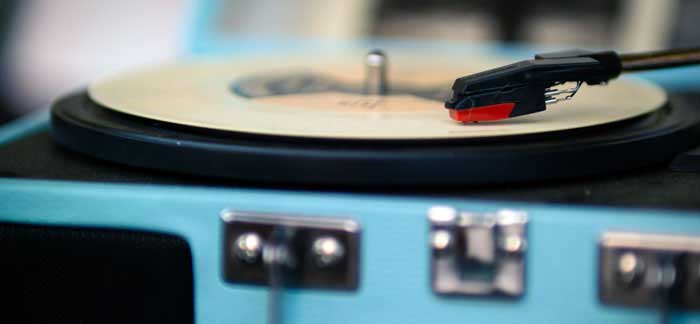Marketing and popularizing what is commonly referred to as a “retro” (a shorthand slang term for “retrograde,” or backward-moving) aesthetic, the company Urban Outfitters is responsible, more than almost any other clothing brand, for the tremendous revitalization of hipster and indie style in American youth culture. Largely because of Urban Outfitters, the cutting edge of contemporary fashion has become perpetually bent on the past: evoking and fusing various generational trends to create something entirely fresh and new. Nowadays, girls sport the long hair and flower crowns of sixties hippies, the high-waisted shorts of eighties “pin-up girls, “the Polaroid cameras of nineties grunge enthusiasts—and of course, the archetypal vinyl record player.
Few items can rival the romance and nostalgia that a record player and its accompanying set of LPs so easily inspire in our hearts. Accurately or not, record players recall fond cultural conceptions of better music and simpler times, even for those of us who cannot actually remember a time before iPods, wireless speakers, and online music streaming. Their popularity is therefore owed not only to their tremendous aesthetic value as vintage or “throwback” items, but also to the manner in which our cultural associations between vinyl players and a golden age of music influence the product's overall marketability.
In light of this, it is clear that a large portion of the attention and reverence we pay to of record players is rooted in a deeply mythologized reimagining of our past. Nevertheless, despite the somewhat misguided origins of its popular revitalization, the record player's reemergence in contemporary culture has had a tremendous impact upon the manner in which we perceive music in our modern, technology-driven world. For starters, the physical structure of vinyl record players—particularly the fact that they require an entirely separate speaker component, which can either perfect or utterly ruin the overall sound quality depending on the speaker—compels serious music fans to consider not only the composition of the tracks they are listening to, but also the manner in which audio presentation can impact the quality of the entire album.
Furthermore, the rise of the record player reinforces the practice of selecting our music carefully, rather than streaming whatever albums are available on iTunes or Spotify at the click of a button. LPs are fragile and often expensive physical objects that require a great amount of maintenance and care. Because of this, American youth who purchase record players often find that they are no longer able to take music for granted—instead, they must prioritize buying albums by artists they truly care about, and treating whatever records they do purchase with attentiveness and respect.
In both of these cases, the revitalized status of the record player within American pop culture has helped reintroduce the notion of music selection, production, and performance as serious art forms worth pursuing. It is true that Urban Outfitters' successful marketing of record players likely has something to do with the fact that their consumer base holds a deeply romanticized perception of the cultural associations surrounding the product; nevertheless, the overall impact of the mass production of record players upon the music industry has been overwhelmingly positive, and should be recognized as such.

